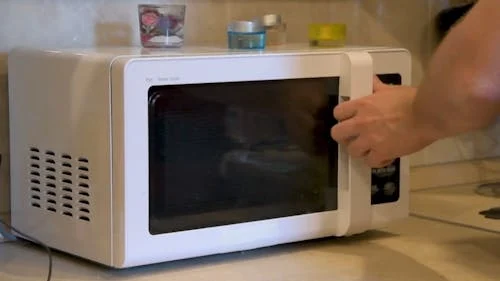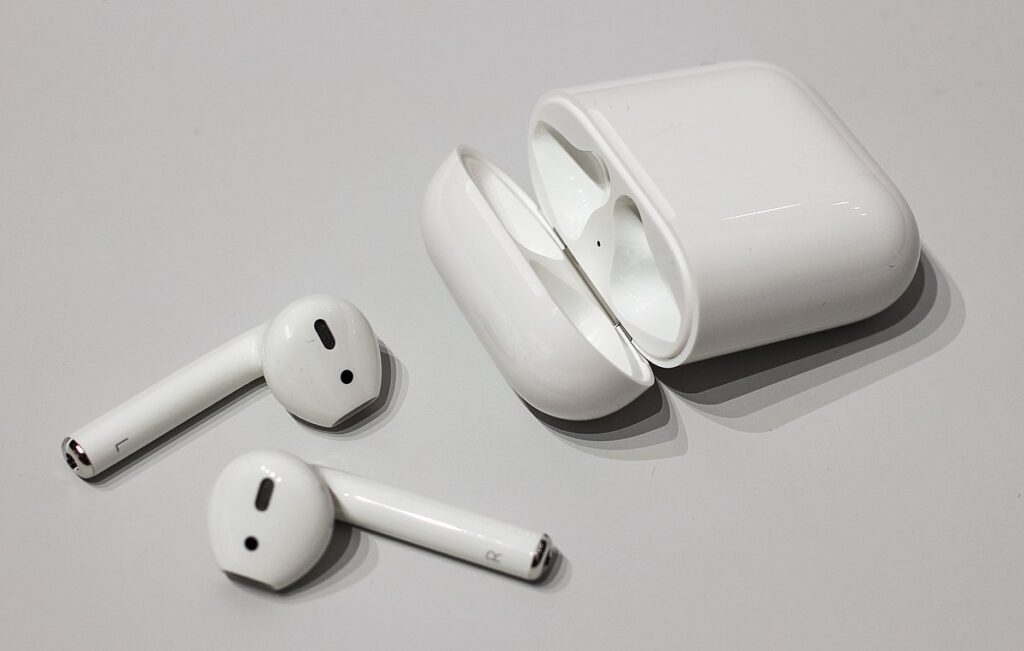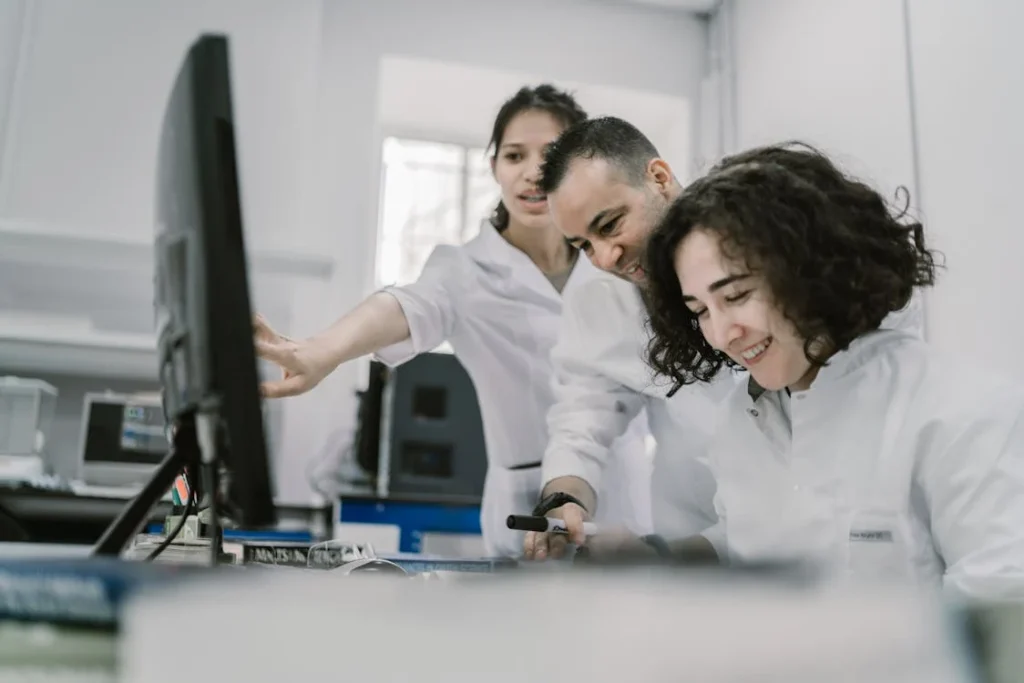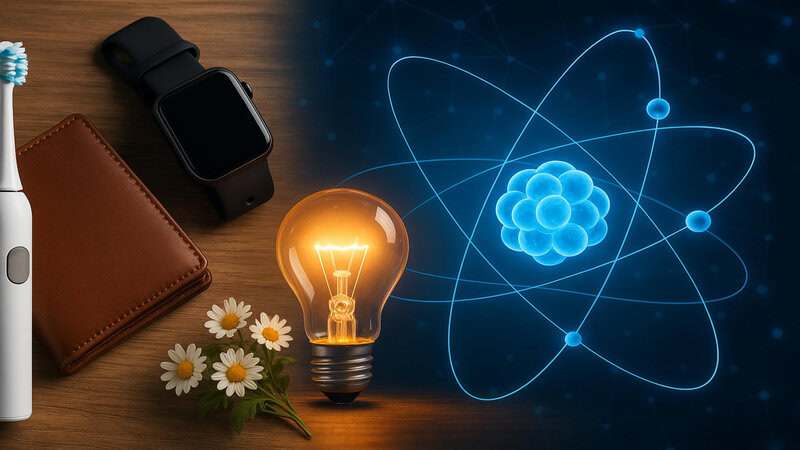Science is intricately woven into our daily lives, often in ways we don’t immediately recognize. From the way our smartphones function to the design of our kitchen appliances, scientific principles are at play. For instance, the microwave oven utilizes electromagnetic radiation to heat food efficiently, while the refrigerator employs thermodynamics to keep our perishables fresh. These examples highlight how ordinary objects are powered by extraordinary scientific innovations.
1. Microwave Ovens

Microwave ovens utilize electromagnetic waves to rapidly heat food. At their core, magnetrons generate these microwaves, which cause water molecules in food to vibrate, producing heat through friction. This process allows for quick and efficient cooking. (britannica.com)
2. Smartphones

Smartphones are marvels of miniaturized technology, integrating touchscreens, gyroscopes, and microprocessors. Touchscreens detect user input through capacitive sensing, where the human body’s electrical properties alter the screen’s electrostatic field, enabling precise touch recognition. Gyroscopes measure rotational movement using vibrating structures that respond to angular changes, allowing for orientation detection. Microprocessors execute complex computations, coordinating device functions. These components rely on advancements in physics and materials science to deliver seamless user experiences. (michelegargiulo.com)
3. Waterproof Fabrics

Waterproof jackets and shoes, such as those made with Gore-Tex, utilize microporous membranes to repel water while allowing vapor to escape. These membranes are composed of expanded polytetrafluoroethylene (ePTFE), which contains over 1.4 billion microscopic pores per square centimeter. Each pore is 20,000 times smaller than a water droplet, preventing liquid water from penetrating, yet large enough to let water vapor pass through, ensuring breathability. (goretexprofessional.com)
4. Automatic Doors

Automatic doors in malls and hospitals operate using sensors like infrared and ultrasonic to detect motion. Infrared sensors emit light beams across the doorway; when an object interrupts the beam, the sensor triggers the door to open. Ultrasonic sensors emit high-frequency sound waves; changes in the reflected waves indicate movement, prompting the door to open. These technologies showcase the application of physics and automation in daily life. (livescience.com)
5. Toothpaste

Toothpaste is a daily application of chemistry, combining various compounds to promote oral health. Abrasives like calcium carbonate and hydrated silica gently scrub teeth, removing plaque and stains without harming enamel. Fluoride compounds, such as sodium fluoride and sodium monofluorophosphate, strengthen enamel and inhibit decay by promoting remineralization and disrupting bacterial metabolism. Antibacterial agents like triclosan and zinc salts reduce plaque and gingivitis, enhancing oral hygiene. (pmc.ncbi.nlm.nih.gov)
6. LED Light Bulbs

LED light bulbs operate through electroluminescence, where electrons recombine with electron holes in a semiconductor, releasing energy as photons. This process is highly efficient, converting most electrical energy into light rather than heat. Compared to incandescent bulbs, LEDs use at least 75% less energy and last up to 25 times longer, significantly reducing energy consumption and costs. (energy.gov)
7. Credit and Debit Cards

Credit and debit cards employ various technologies to ensure secure financial transactions. Magnetic stripes store static data, which can be easily copied, making them vulnerable to fraud. In contrast, EMV (Europay, Mastercard, and Visa) chip cards generate unique, encrypted codes for each transaction, enhancing security by preventing data replication. Additionally, contactless payment methods utilize radio-frequency identification (RFID) or near-field communication (NFC) technologies, allowing users to make payments by simply tapping their card or device near a reader, further streamlining the payment process. (howstuffworks.com)
8. Sunscreen

Sunscreens are formulated with active ingredients that protect the skin from harmful ultraviolet (UV) radiation. Mineral-based sunscreens contain zinc oxide or titanium dioxide, which act as physical blockers by reflecting and scattering UV rays, preventing them from penetrating the skin. Chemical sunscreens, on the other hand, absorb UV radiation through organic compounds like avobenzone and oxybenzone, converting it into harmless heat. The Sun Protection Factor (SPF) rating indicates the level of protection against UVB rays, with higher SPF values offering greater protection. Broad-spectrum sunscreens protect against both UVA and UVB rays, reducing the risk of skin cancer and premature aging. (fda.gov)
9. Airbags

Airbags enhance vehicle safety by rapidly inflating during a collision, providing a cushion that absorbs impact forces. This swift inflation is achieved through a chemical reaction involving sodium azide (NaN₃). When a collision is detected, an electrical signal ignites the sodium azide, causing it to decompose into sodium metal and nitrogen gas:
2 NaN₃ → 2 Na + 3 N₂
The nitrogen gas inflates the airbag within milliseconds, creating a protective barrier for occupants. To mitigate the reactivity of sodium metal produced in the reaction, additional compounds like potassium nitrate (KNO₃) are included. These compounds react with sodium to form inert substances, ensuring the safety of the airbag system. (mcgill.ca)
The entire deployment process—from collision detection to full inflation—occurs in approximately 30 milliseconds, faster than the blink of an eye. This rapid response is crucial for effectively protecting occupants during a crash. (acs.org)
10. Nonstick Cookware

Nonstick cookware utilizes coatings like Teflon (polytetrafluoroethylene, PTFE) and ceramic to prevent food from sticking. PTFE’s molecular structure features carbon atoms bonded to fluorine atoms, creating a hydrophobic and low-friction surface that resists adhesion. Similarly, ceramic coatings, often based on silica (silicon dioxide), form a smooth, non-reactive layer that minimizes sticking. These materials’ unique molecular arrangements ensure easy food release and effortless cleaning. (britannica.com)
11. Bluetooth Headphones

Bluetooth headphones utilize short-range radio communication and digital signal processing to deliver wireless audio. Operating in the 2.4 GHz frequency band, Bluetooth devices employ frequency-hopping spread spectrum to minimize interference and ensure secure connections. Digital signal processing converts analog audio signals into digital form, enabling efficient transmission and playback. This technology frees users from tangled wires, offering mobility and convenience. (intel.com)
12. Automatic Coffee Makers

Automatic coffee makers employ precise control of water temperature, timers, and brewing cycles to produce a consistent cup of coffee. Thermodynamics principles are applied to maintain optimal brewing temperatures, typically around 200°F (93°C), ensuring efficient extraction of flavors. Automated systems regulate water flow and timing to achieve the desired strength and taste, exemplifying applied science in daily life. (us.ukessays.com)
13. Supermarket Refrigerators

Supermarket refrigerators employ the vapor-compression refrigeration cycle to keep food fresh. This cycle involves a refrigerant that absorbs heat from the interior and releases it externally. The process includes compression, condensation, expansion, and evaporation, effectively transferring heat from the refrigerated space to the surroundings. This system is fundamental in maintaining the freshness of perishable goods in supermarkets worldwide. (en.wikipedia.org)
14. Digital Watches

Digital watches utilize quartz crystals or atomic clocks to achieve precise timekeeping. Quartz crystals, when subjected to an electric field, oscillate at a stable frequency due to their piezoelectric properties. This consistent vibration is harnessed to maintain accurate time. Atomic clocks, on the other hand, measure time based on the natural vibrations of atoms, offering unparalleled precision. These technologies ensure that digital watches provide reliable and accurate timekeeping. (britannica.com)
15. Running Shoes

Modern running shoes incorporate advanced biomechanics and material science to enhance performance and comfort. Shock-absorbing foams, such as EVA (Ethylene Vinyl Acetate) and polyurethane, effectively reduce impact forces during running. (footonboot.com) Arch supports, often made from thermoplastic materials, provide stability and correct alignment, addressing issues like overpronation. (feetfirstclinic.com) Mesh fabrics in the uppers improve breathability and flexibility, keeping feet cool and comfortable. (footonboot.com) These innovations collectively contribute to the efficiency and safety of runners. (footonboot.com)
Conclusion

Scientific innovation permeates our daily lives, transforming ordinary objects into marvels of engineering and design. From the precise thermodynamics in refrigerators to the advanced materials in running shoes, science enhances functionality and efficiency. Recognizing the hidden science behind these technologies fosters a sense of wonder and mindfulness, encouraging curiosity and appreciation for the continuous discoveries that shape our world. Embracing this knowledge enriches our understanding and connection to the everyday items we often take for granted.
.article-content-img img { width: 100% }



Vielleicht interessiert es Sie:
Wussten Sie! Minensuchratten auf dem Schlachtfeld und sie sind super effektiv!
Wie viele Giraffenarten gibt es? Leben sie alle in Afrika?
Der Vogel ist das Weibchen der Vögel: wahr oder falsch?
Warum bauen Biber Dämme? Welchen Nutzen?
Warum leben manche Tiere nachtaktiv? Welche Vorteile?
Küssen Tiere? Ist das die gleiche Bedeutung wie Menschen?
200+ Hilarious Seahorse Jokes That Will Make You Smile and Giggle
200+ Funny Investment Jokes to Boost Your Financial Humor Game